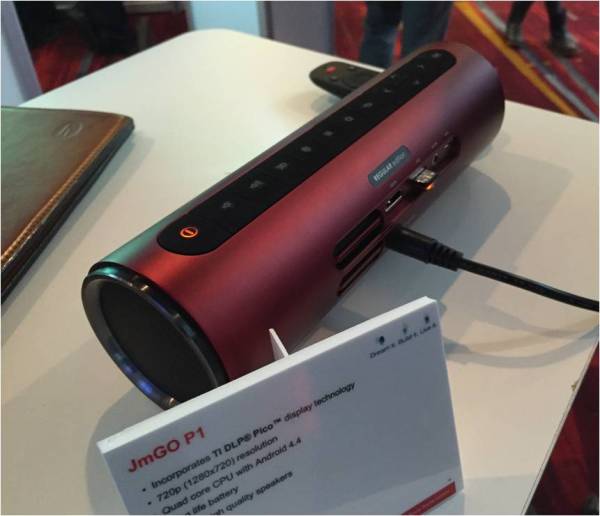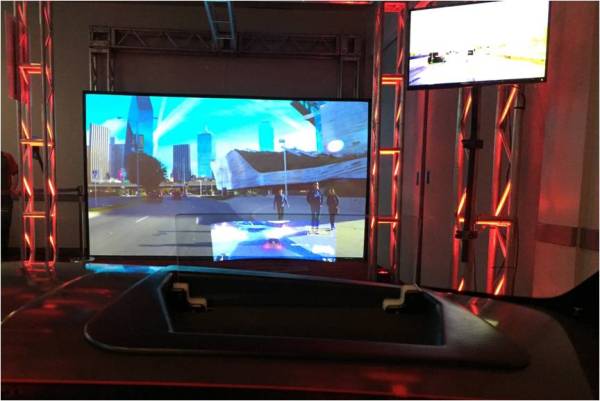The big news at CES from Texas Instruments was a new 4K / UHD chip that provides higher resolution in a much smaller package. Instead of the existing 1.4” 4K Cinema chip, the new 4K / UHD chip has a diagonal of only 0.67”. The smaller size will allow for a much lower price as TI can produce more chips per wafer. The new device uses the TRP pixel structure with a 17° tilt angle compared to the 12° in the older chip design. The new chip is very similar in size to the 0.65” FHD chip with almost identical packaging. The pin layout is of course very different from the FHD chip. The chip is slated for customer release in April 2016, with a few early demonstrators already delivered to some customers. One of those was Optoma that showed a projection prototype at CES 2016.
TI is aiming to provide 4K / UHD resolution with high ANSI contrast in the up to 5,000 lumens range at a lower price point to the market. They expect that this combination will lead to increased projector sales in markets like home theater as well as in professional applications.
The new mirror size has a 5.4µm pitch, which calculates to twice the mirror numbers compared to the FHD chip. In case you wonder how twice the FHD mirror count equals a 4K / UHD pixel count, TI is using an optical shift approach to have each mirror creating two pixels on the screen. These two pixels are offset by 50% of the diagonal pixel size and are presented one after the other. Based on the very high switching speed of the DLP mirror, they can create these two pixels in the required time frame. Their press release also states that they are using “advanced image processing” without going into any more details of what this entails.
![]()
TI showed a set up of comparable brightness projectors using optical shift modes or full 4K / UHD imagers to compare their solution to existing projectors. This demonstration has been around for a few months already and if you had a chance to see it, it is very impressive. The clarity of the TI image in this demonstration exceeds all other projector images including the full 4K UHD projector. TI is aiming at establishing their solution as a true 4K / UHD solution based on a image quality exceeding that of other 4K projectors. Nevertheless, we can expect that this approach will lead some lengthy discussion on how to define 4K / UHD for projectors. TI’s position is that with time shifting their physical pixels once, they show every frame a total of 8.3 million pixels, which is one of the definitions for 4K / UHD.

While this was definitely the most important news from TI at CES 2016, they also showed a variety of devices that uses their DLP technology beyond classic projection. Besides a multitude of pico and micro projectors, they also demoed their and their customer’s ideas for other applications. There are more and more AR / VR headsets using TI imagers like the new Vuzix and Glyph devices. Sekonix is working on a HUD and TI was showing their interpretation of an advanced vehicle (EVO) that features not only one HUD for the driver, but also an additional one for the passenger to watch a movie in wide format. The EVO demo included navigation and other information. As TI is not developing the HUD as a product, it is a demonstration model to show what is possible.

TI did say that overall, unit sales are growing and that all pico markets are in fact showing increasing sales. Finally, it seems that the small projector market is finally taking off. – NH
Analyst Comment
The large size of the 1.4″ UltraHD chip had been a problem for TI. We report in this issue that Panasonic told us that it was looking at a shift method with a 2560 x 1440 chip to avoid the optical re-design needed to accomodate that size of chip. By making the new chip very close to the current 0.65″ device, TI has minimised this barrier to UltraHD adoption. (BR)

